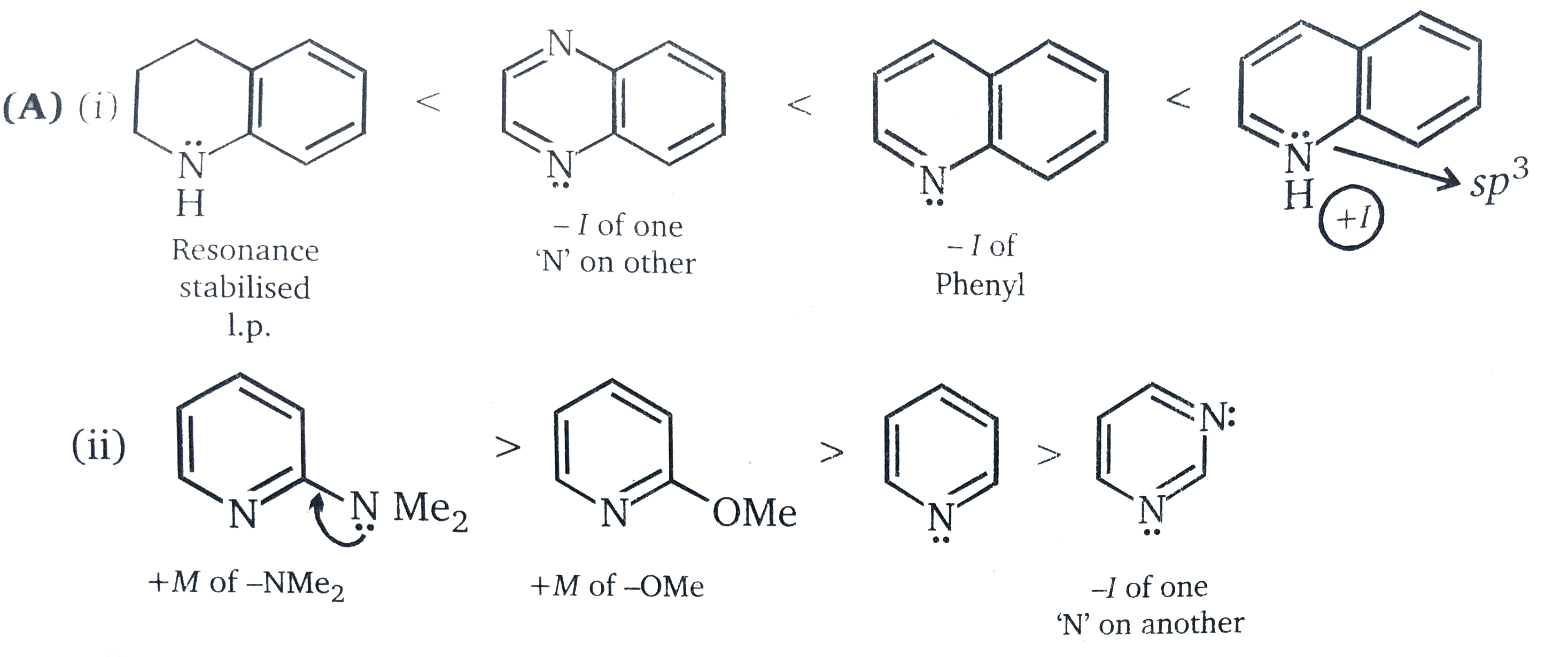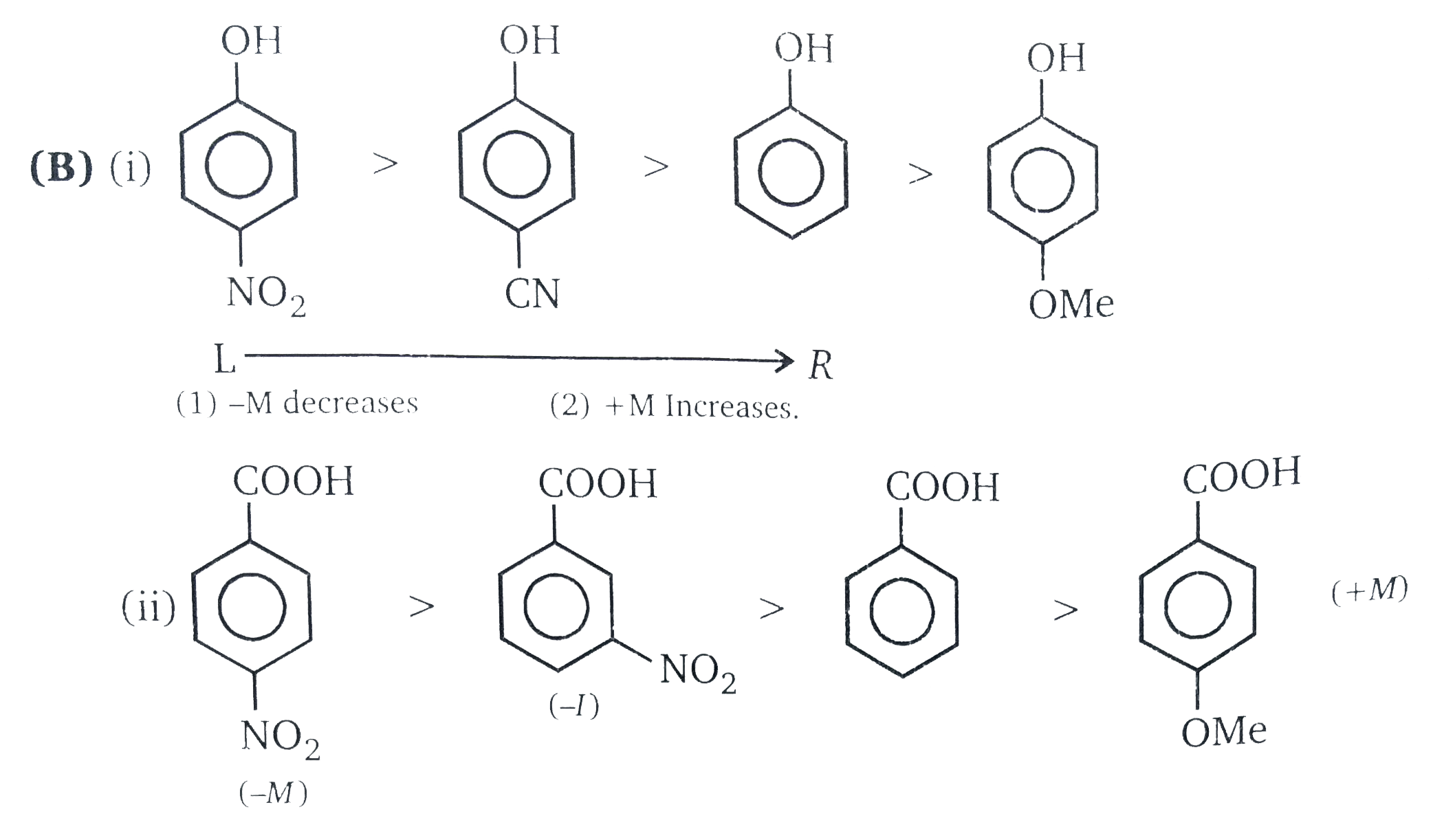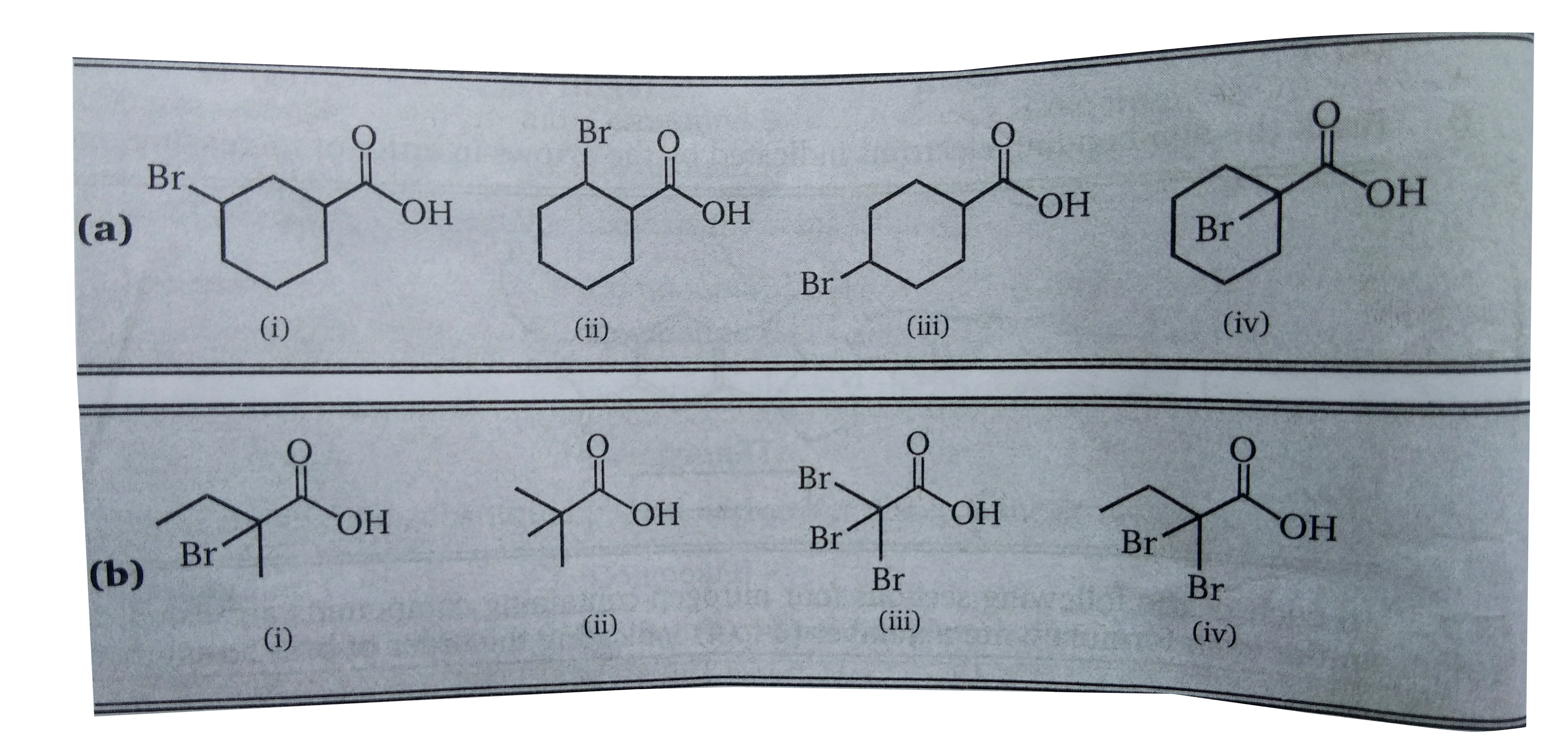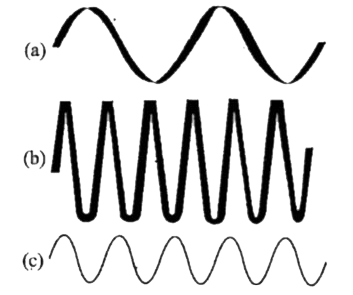In the two questions below , you are asked to rank the relative strengths of illustrated acids and bases. Use your knowledge of resonance and inductive to answer this.
For the series of bases shown below, rank the set from strongest to weakest.
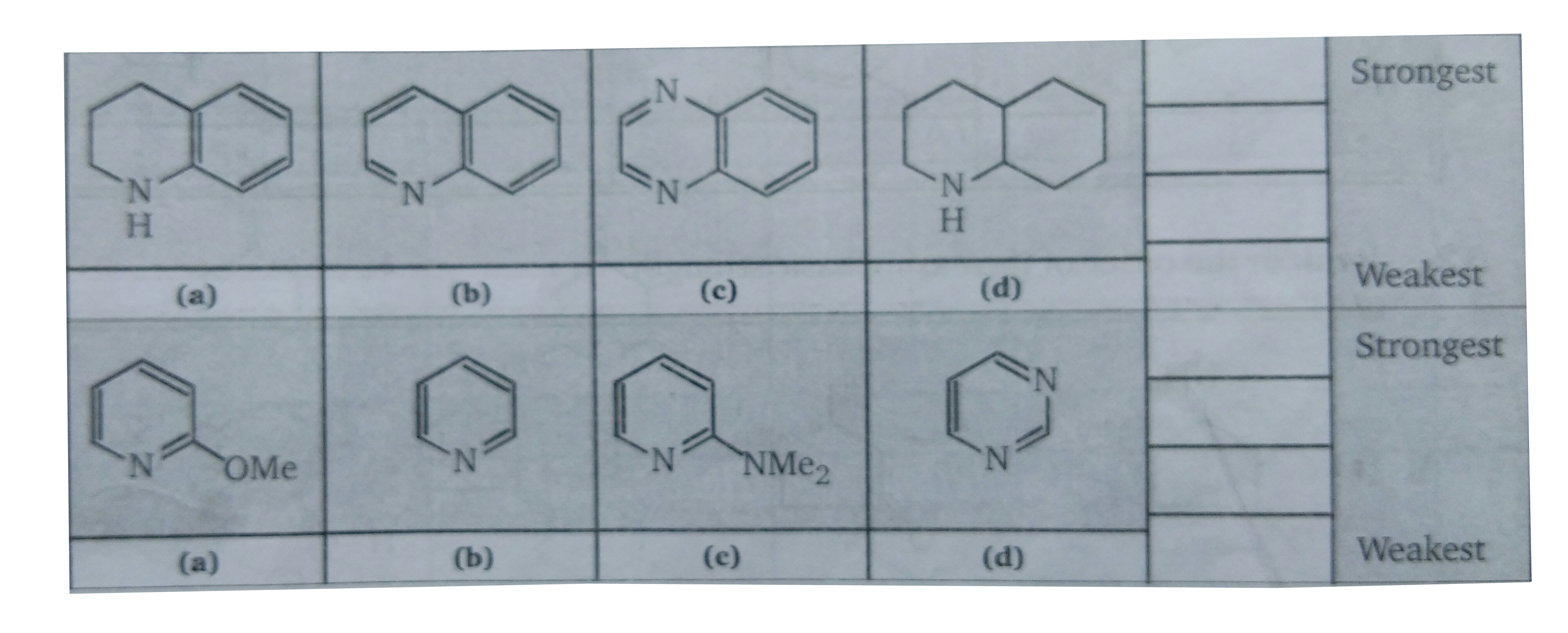
B. For the series of acids shown below, rank the set from strongest to weakest.

The correct Answer is:A(i) - d > b > c > a (ii)−c>a>b>d
B(i) −c>d>a; (ii)−b>d>c>a
Topper's Solved these Questions
- BOOK - MS CHOUHANCHAPTER - GENERAL ORGANIC CHEMISTRYEXERCISE - LEVEL- 11videos
GENERAL ORGANIC CHEMISTRY
- BOOK - MS CHOUHANCHAPTER - FAMILIES OF CARBON COMPOUNDS: FUNCTIONAL GROUPS AND INTERMOLECULAR FORCES EXERCISE - ADDITIONAL OBJECTIVE QUESTIONS ( Matrix Match Type )4videos
FAMILIES OF CARBON COMPOUNDS: FUNCTIONAL GROUPS AND INTERMOLECULAR FORCES
- BOOK - MS CHOUHANCHAPTER - GRIGNARD REAGENTSEXERCISE - Level 1 (Q.61 To Q.66)1videos
GRIGNARD REAGENTS
Similar Questions
Knowledge Check
- Question 1 - Select One
Each of the questions below consists of a question and two statements numbered I and II given below it. You have to decide whether the data provided in the statements are sufficient to answer the question.
What is Suman's rank from the top in a class of forty students?
I. Suman is 3 ranks below Deepak from the top.
II. Deepak's rank from the bottom is 23.
III. Suman is 3 ranks above Deepak from the bottom.AAny two of the threeBOnly I and IICOnly II and IIIDAll I, II and III - Question 2 - Select One
Each of the questions given below consists of a question and two statements numbered I and II. You have to decide whether the data provided in the statements are sufficient to answer the question.
What is Suneeta's rank from top in the class ?
I. In the class of 42 children Suneeta is 29th from the bottom.
II. Suneeta is ten ranks below Samir.A(a) if the data in statement I alone are sufficient to answer the question, while the data in statement II alone are not sufficient to answer the questionB(b) if the data in statement II alone are sufficient to answer the question, while the data in statement I alone are not sufficient to answer the questionC(c) if the data either in statement I alone or in statement Il alone are sufficient to answer the questionD(d) if the data given in both statements I and II together are not sufficient to answer the question
Given below are two quantities named A and B. Based on the given information, you have to determine the relation between the two quantities. You should use the given data and your knowledge of Mathematics to choose among the possible answers. Quantity 1: If the interest earned on some principal for one year- is 16% of the principle. Find the rate of interest. Quantity 2: If the compound interest for 2 years earned on the principle of Rs.1500 is Rs.315, fmd the rate of interest
View SolutionIn the following two questions, a piece of paper is folded and cut as shown below in the question figures. From the given answer figures, indicate how it will appear when opened.
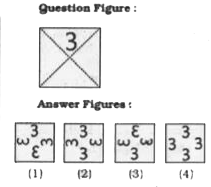 View Solution
View SolutionIn the following two questions, a piece of paper is folded and cut as shown below in the question figures. From the given answer figures, indicate how it will appear when opened.

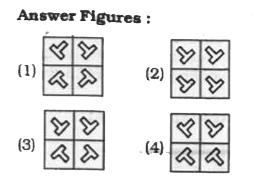 View Solution
View SolutionDirections: Given below are two quantities named I and II. Based on the given information, you have to determine the relation between the two quantities. You should use the given data and your knowledge of Mathematics to choose among the possible answers.
Quantity I: The average of four number is 14. If one number is removed from its set then the average is reduced by 1, Find the removed number.
Quantity II: 15View SolutionDirections: Given below are two quantities named I and II. Based on the given information, you have to determine the relation between the two quantities. You should use the given data and your knowledge of Mathematics to choose among the possible answers.
Quantity I: The average of four number is 14. If one number is removed from its set then the average is reduced by 1, Find the removed number.
Quantity II: 15View SolutionGiven below are two quantities named A and B. Based on the given information, you have to determine the relation between the two quantities. You should use the given data and your knowledge of Mathematics to choose among the possible answers. Quantity 1: If the sum of the circumference and the radius of a circle is 102 cm then find the quantity of radius of the same circle. Quantity 2: If the perimeter of a rectangle is 42 cm and the length of the rectangle is twice the width then find the length of the rectangle.
View Solution


